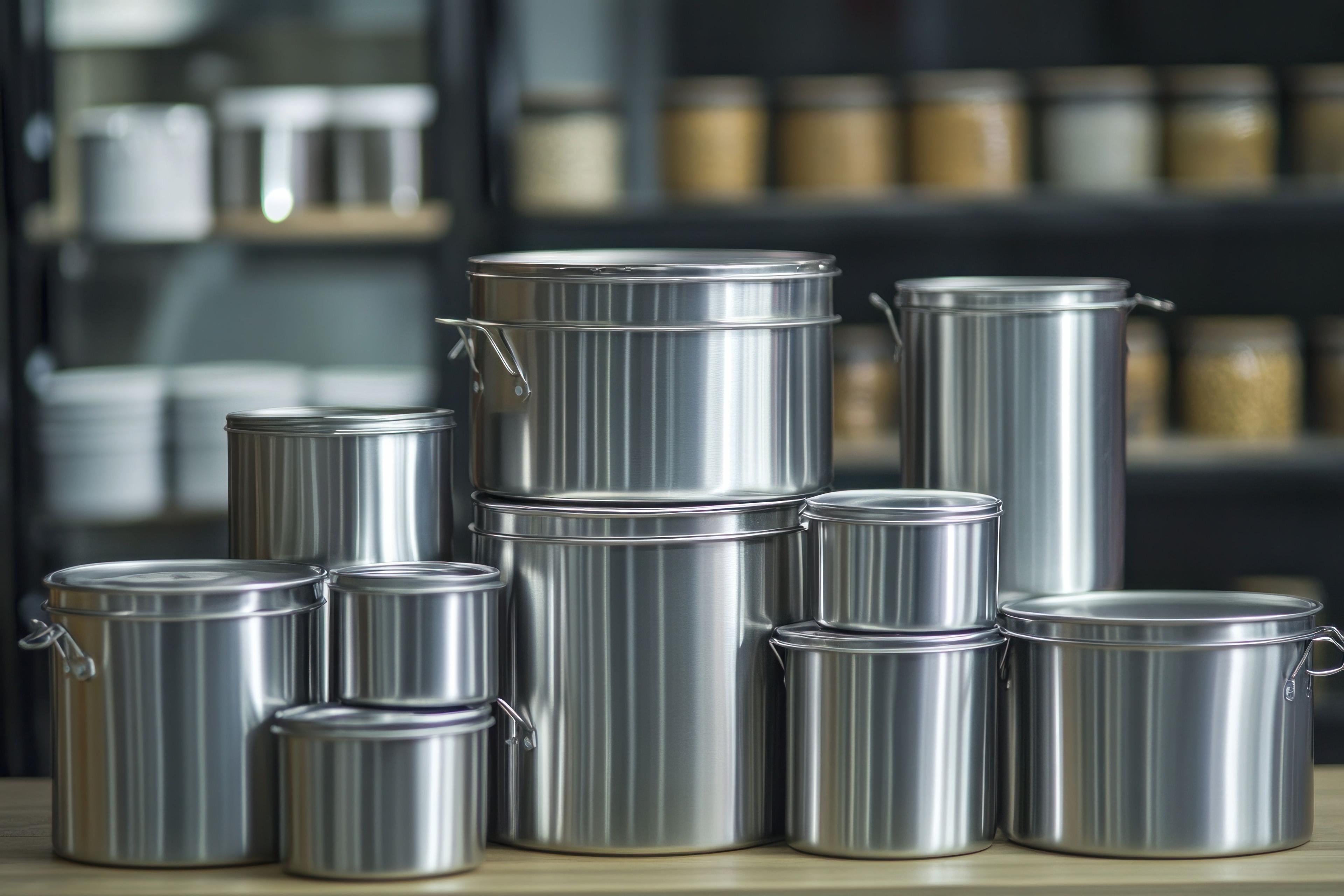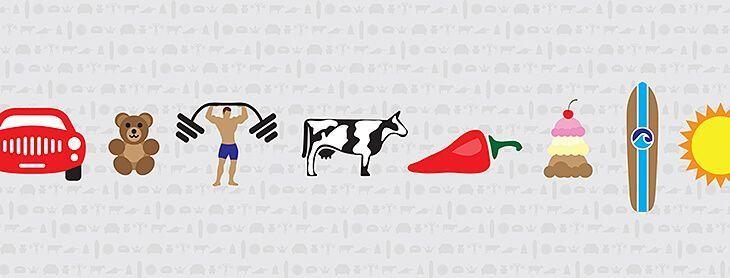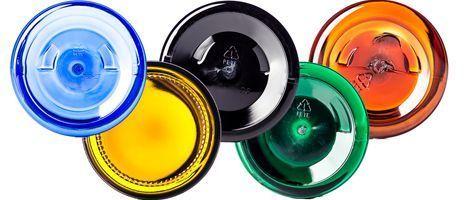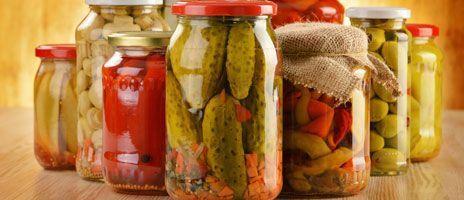The Pros and Cons of Packaging with Metal Containers


Metal packaging has long been a staple in various industries, from food and beverage to cosmetics, pharmaceuticals, and industrial goods. Its durability, recyclability, and ability to protect contents from external factors make it an attractive choice for many businesses. However, like any packaging material, metal has its advantages and drawbacks.
In this blog, we will explore the pros and cons of packaging with metal containers, helping businesses make informed decisions about their packaging needs.
The Pros of Packaging with Metal Containers
1. Durability and Strength
One of the biggest advantages of metal packaging is its incredible strength and durability. Unlike plastic or glass, metal containers are highly resistant to damage from impact, pressure, and rough handling.
- Impact Resistance – Metal containers can withstand drops, stacking, and transportation without breaking.
- Long Shelf Life – Metal packaging maintains its shape and function over extended periods, making it ideal for long-term storage.
- Protection Against Punctures – Unlike some plastics, metal is not easily punctured, which is critical for hazardous materials or sensitive products.
2. Excellent Barrier Properties
Metal containers provide an outstanding barrier against external elements that could compromise product quality. They are particularly effective in protecting contents from:
- Oxygen and Moisture – Metal containers prevent oxidation and moisture infiltration, keeping food, pharmaceuticals, and chemicals safe.
- Light and UV Radiation – Unlike transparent plastic or glass, metal blocks all light, ensuring that light-sensitive products remain stable.
- Contaminants and Pests – Metal packaging offers superior protection against external contaminants, bacteria, and insects.
3. Sustainability and Recyclability
With increasing emphasis on sustainable packaging, metal is one of the most eco-friendly options available.
- Infinitely Recyclable – Unlike plastic, which degrades after multiple recycling processes, metals like aluminum and steel can be recycled indefinitely without losing their properties.
- High Recycling Rates – Steel and aluminum containers have some of the highest recycling rates worldwide, reducing landfill waste.
- Energy Savings – Recycling metal requires significantly less energy than producing new metal from raw materials.
4. Aesthetic Appeal and Premium Perception
Metal containers often convey a premium look and feel, making them a popular choice for luxury and high-end products.
- Sleek, Modern Designs – Metal can be customized with embossing, debossing, and various coatings for a visually appealing look.
- Premium Consumer Perception – Many consumers associate metal packaging with quality, durability, and high-end branding.
- Reusability – Many metal containers are designed to be reusable, increasing brand engagement and sustainability efforts.
5. Temperature Resistance
Unlike plastic, which can warp under heat or cold conditions, metal maintains its structural integrity in extreme temperatures.
- Heat Resistance – Metal packaging can withstand high temperatures, making it ideal for canned foods, sterilization, and industrial applications.
- Cold Resistance – Metal remains stable under freezing conditions, making it suitable for refrigerated and frozen products.
6. Tamper-Proof and Secure
Many industries, particularly pharmaceuticals and food, require tamper-proof packaging to ensure product integrity and consumer safety.
- Tamper-Resistant Seals – Metal containers can be sealed in a way that makes tampering evident, providing consumer confidence.
- Strong Enclosures – Unlike flexible packaging, metal containers cannot be easily punctured or tampered with.
The Cons of Packaging with Metal Containers
1. Higher Initial Costs
One of the biggest drawbacks of metal packaging is its higher cost compared to plastic or paper alternatives.
- Material Costs – Aluminum and steel are more expensive to produce and process than plastic.
- Manufacturing Expenses – The production of metal packaging involves specialized machinery and processes, adding to costs.
- Customization Costs – While customization is possible, embossing, coating, and printing on metal can be costlier than other materials.
2. Weight and Transportation Challenges
While metal is durable, it is also heavier than plastic, leading to increased transportation costs and logistical challenges.
- Higher Shipping Costs – Heavier metal containers increase fuel consumption during transportation.
- Handling Difficulties – Large metal containers may require specialized handling equipment, adding complexity to the supply chain.
- Storage Space – Because metal containers do not collapse like plastic or paper alternatives, they can take up more space in warehouses.
3. Potential for Corrosion and Rust
Although metal is durable, it is not entirely resistant to corrosion and rust, especially in certain environments.
- Exposure to Moisture – Uncoated metal can rust when exposed to moisture over time.
- Chemical Reactions – Certain acidic or alkaline contents may react with metal, requiring specialized coatings or linings.
- Coating Limitations – While coatings prevent rust, they may degrade over time, potentially affecting product quality.
4. Limited Flexibility in Shape and Design
Unlike plastic, which can be molded into virtually any shape, metal packaging has some design constraints.
- Rigid Structure – Metal containers cannot be easily compressed, folded, or resized once manufactured.
- Higher Production Complexity – Creating custom metal shapes requires extensive tooling and setup, increasing production times.
- Less Adaptability for Soft Packaging – Metal is not suitable for flexible packaging solutions like pouches or squeeze tubes.
5. Consumer Inconvenience
Although metal packaging offers great protection, some consumers find it less convenient compared to alternatives like plastic or glass.
- Difficult to Open – Metal lids and seals may require tools (e.g., can openers) to access contents.
- Non-Transparent – Unlike plastic or glass, metal packaging does not allow consumers to see the product before purchasing.
- Sharp Edges – Some metal containers, especially tin cans, may have sharp edges when opened, posing a minor safety risk.
Making the Right Choice: Is Metal Packaging Right for You?
The decision to use metal packaging depends on various factors, including the type of product, target market, budget, and sustainability goals. To determine whether metal packaging is the right choice, consider the following questions:
- Is long-term durability a priority? If your product requires maximum protection, metal packaging is an excellent option.
- Are sustainability and recyclability important to your brand? Metal packaging aligns well with eco-friendly initiatives and consumer expectations.
- Do you need a premium look for your product? If branding and consumer perception matter, metal packaging can elevate your product’s appeal.
- Is cost a major factor in your decision? If budget constraints are tight, consider whether the long-term benefits outweigh the initial investment.
Metal packaging offers numerous advantages, including durability, sustainability, excellent barrier properties, and premium aesthetics. However, it also comes with challenges such as higher costs, weight issues, and potential corrosion risks.
For businesses looking to invest in long-term, high-quality packaging solutions, metal containers remain a strong contender. By weighing the pros and cons, companies can make informed decisions that align with their brand goals and industry needs.
Looking for high-quality metal packaging solutions? Explore our wide range of durable, sustainable, and customizable metal containers today!




